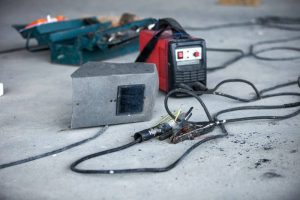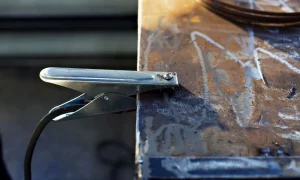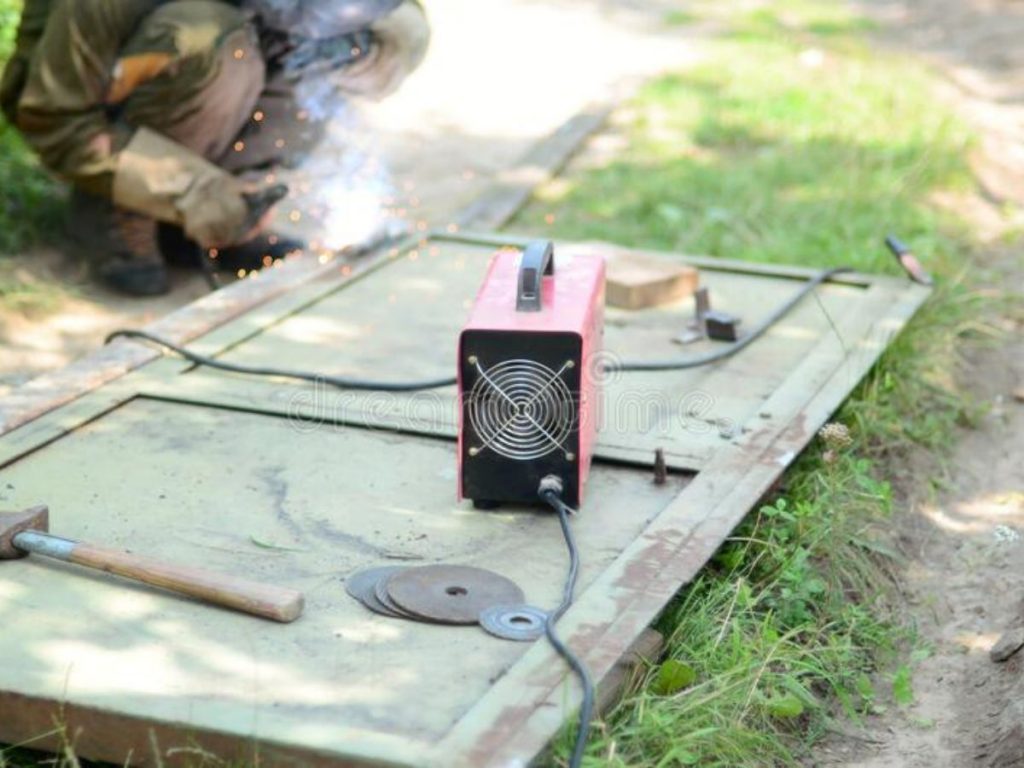You may be wondering, “Why Should I Ground My Welder?” In this article, you’ll learn what happens when you don’t ground your welder correctly. Learn about the different types of grounding and how to properly ground your welder. Welding is a complicated process, so it’s important to know the right way to ground your welder.
Why Would You Ground A Welder?
Grounding a welder is an important safety step for any welder. This process ensures that the workpiece and the machine have the same potential level. This helps to protect the workpiece from damage and reduce the potential of any failures in the electrical circuit. Grounding a welder can be accomplished in several ways. One way is to use a metal table to connect the workpiece and the machine to the ground. Another method involves using a spring clamp on the workpiece to complete the circuit.
If you are not sure of why you need to ground a welder, you should check the manufacturer’s manual. It should mention that a welder should be grounded if it is being used in a wet environment. This is because water is a natural conductor of electricity, so you could become shocked.
Another way to ground a welder is to use a grounding plug. Many welders are sold with grounding already installed, but not all of them. Look for a “Grounding” symbol on the rating plate. Grounding plugs should be plugged into a grounded outlet. Do not attempt to remove the grounding plug, as it could be dangerous.

What Happens To Your Weld Quality If You Have A Ba
The quality of a weld will decrease if you have a ba, also known as trapped gas. This weakens the weld and causes it to fail. It can be caused by improper base metal preparation, improper shielding gas flow, or using too high of an amperage. To reduce this issue, you should use the correct size electrode.
The electrode will become stuck and the arc will stutter. This leads to whiskers and can affect the flow in pipes. In addition, whiskers can damage equipment downline. Therefore, welders should increase the stickout distance of the wire. Welders should also avoid using too high a travel speed. It’s important to reduce arc speed and increase wire stick-out distance. It’s also important to avoid using any tools like grinders or chipping hammers that will cause mechanical damage to the weld.
A ba does not mean you cannot learn to weld. There are short-term programs and degree programs for welders. Many employers also require you to take a test to prove your welding skills.
Different Types of Grounding
When welding, there are several different types of grounding. One way is through a wire that’s permanently attached to the welding machine. Another way is through a separate clamp that’s connected to the workpiece. In either case, grounding a welding machine requires some precautions, and a failure to do so can damage your expensive welding equipment.
When welding, grounding a piece is necessary because it reduces the voltage between the workpiece and the welding machine. Grounding the workpiece is important because an accidental failure can lead to a buildup of voltage and electrocution. Using a spring-loaded ground clamp is another way to ground a piece.
Welders often come with a grounded plug, but not all of them do. Look for a symbol on the rating plate to find out if your welder has grounding built in. If it doesn’t, plug it into a grounded outlet. Don’t attempt to disconnect the grounding plug without professional advice.

How Do You Ground Your Welder?
Grounding is essential for the safe operation of your welder. Without it, your welder could become a potential fire hazard, which could endanger the operator, the building, and anyone else working around the machine. A well-ground welder will prevent this problem, as it will reduce the voltage between the workpiece and the machine.
Ensure the welder is grounded before you begin welding. This can be achieved by plugging it into a grounded receptacle, making sure to keep the table grounded. Also, make sure that you wear gloves and don’t stand in water while working with the welder. You should also read the manual of your welder and make sure that you know the HF travel path.
A grounding clamp is another useful tool to use. It’s easy to use, too. Simply clean the piece of metal, clamp the ground clamp on it, and your welder will be properly grounded. Clamping the grounding clamp directly to the workpiece is the safest practice, but if you can’t clamp it to the workpiece, you should clamp it to a metal table or workbench. Make sure you don’t lean over the table or clamp during welding. You should also know that there are two kinds of grounding: work lead and earth grounding. Each has its own distinct function and safety purpose.
Where Do You Put the Ground While Welding?
Welding is an extremely dangerous activity, and there are several ways to protect yourself while welding. The first step is to ensure that the piece of metal you’re working on is clean and secure. Next, you should clamp the piece of metal to the ground, avoiding walls, ceilings, and other objects that could become conductive. You can also clamp a grounding clamp directly to the metal table or workbench that you’re working on, but be sure not to lean too far forward. There are two different types of grounding, work lead grounding and earth grounding. Each serves different safety purposes.
The ground clamp you use should be separate from your power cord or house ground. Sometimes, welders use a combination of positive and negative, or even AC, as their ground. And you may not care about the table or bench that you’re working on; it’ll get burnt.

What Is The Best Ground Clamp For MIG Welders?
Choosing the best ground clamp is essential if you are planning to weld metal. You should choose a clamp that will provide you with a level of safety, and the one you purchase must be able to handle the amount of current that your welding machine can produce. There are several models available on the market, and you need to know which one is right for your welding machine.
The best ground clamps will give you excellent clamping power and a large area of contact with the workpiece. The top choice is one with a square inch contact area and a high amp rating. It also has a stiff spring, which is important for the stability of the clamp.
Another important factor in choosing a ground clamp is the string’s strength. The stronger the string, the more secure the ground clamp will be. A strong grounding clamp will provide the right grip and prevent circuit failure. A good grounding clamp should be able to support a sufficient current load without heating.
FAQ About Grounding
Grounding is one of the most important safety practices in welding. It is a process that prevents electrical shocks by preventing the flow of current. Welding machines use a grounding rod, also known as the work lead, to connect to the power supply. The grounding lead is not attached to the workpiece or metal work table, but to the welding machine’s frame.
Welders use extremely high voltages, and if the welding machine is not grounded, the electricity will pass through the person using the tool. This is especially true if the welder is working in wet conditions, as water is a natural conductor of electricity. If the welder is not grounded, the water in the body and damp clothes increase the chance of getting shocked.
A grounding clamp is very useful for this process, but it must be used correctly. You must make sure that the clamp is tight enough to complete the circuit. The clamp should be clamped directly to the workpiece, but this is not always practical. Alternatively, the ground clamp should be clamped to a metal workbench or table. In this case, you should not lean on the table or workpiece when using the clamp. There are two concepts of grounding: earth grounding and work lead grounding. Each serves different safety functions.
Conclusion
Grounding is critical to the safety of arc welding. Many codes document the importance of properly grounding electrical circuits, which are commonly part of an arc welding setup. By properly grounding these circuits, welding safety is increased and the associated processes are safer. However, it’s essential to ensure that the grounding equipment you use is the correct type for the type of welding you are doing.
A well-grounded welding arc is easier to establish, so be sure to clean the work area well. Always wear protective clothing and a helmet to keep your face and body protected from flying slag and chips. Also, make sure that unused electrodes are not left on the work area. These stubs can cause a slipping hazard. Also, handle hot metal carefully and use tongs when handling it. Quenching the metal in water is also important, but should be done carefully. It can cause painful burns.
The use of a grounding table is also recommended when welding with high voltages. It prevents high-frequency signals from escaping from the welding area and causing damage to the surrounding electrical devices. It is also essential to ensure that the grounding table is connected to a suitable ground outside the welding area.

